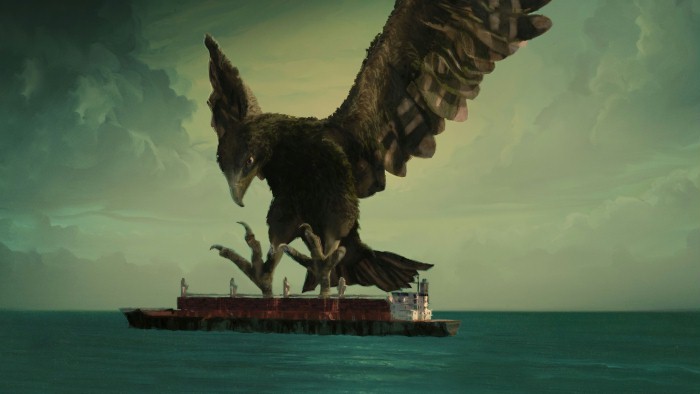LAST HIJACK
CineEuropa
Reviewed for Shockya by Harvey Karten. Data-based on Rotten Tomatoes
Grade: B
Director: Femke Wolting, Tommy Pallotta
Screenplay: Femke Wolting, Tommy Pallotta
Screened at: Review 2, NYC, 9/10/14
Opens: October 10, 2014
In the Tom Hanks vehicle “Captain Phillips,” which deals with a hijacked ship, one of the criminals calls himself simply the interpreter. He insists that he has no respect for the pirates—that they are low-lifes and that the captain should correspond with the people back home in authority to get the pirates to free the men. This attitude—that piracy is a disrespectful profession—is reflected among the law-abiding families of Somalia, which today is the leading country that nourishes dreams of making millions by seizing vessels on the high seas. Specifically in Femke Wolting and Tommy Pallotta’s documentary, the folks in the village of one Mohamed, a fisherman who is disgusted by the low income that casting nets brings about, opts for casting his soul with a small band of criminals, people he knows, using his energy to extract far more money in just a single crime than he could earn with his net in a lifetime. The trouble is that the people he knows best, his own family, are clearly opposed to his choice of vocation. When Mohamed returns to the brood, he finds that his young children do not know him, and what’s more, when a prospective father-in-law arranges a marriage between Mohamed and the older man’s daughter, he extracts a promise that Mohamed will give up piracy for life. If he does not, the older man will personally arrange for an immediate divorce and take his daughter back. Ironically, though, the woman’s dad collects a $2,000 dowry in Somali money, which is a huge pile of paper, an amount that Mohamed could not have picked up with a legal occupation.
Rather than have the theater audience suffer with a talking heads doc or a series of interviews, Wolting and Pallotta add intermittent animation, the most stunning being that of a rapacious bird resembling an eagle that picks up a boat in its talons and drops it back into the Indian Ocean presumably when the ransom has been meet. In one successful seizure, Mohamed and his followers “earn” $1.8 million, but as we learn from this most informative study, the pirates sometimes net as little as 15%, with major shares of money going to “investors” and suppliers of aircraft and guns and the like.
The pirates in this feature do not look like the bony characters typical of Somalians depicted in either the Danish film “A Hijacking” or in the American take, “Captain Phillips,” which hit the screens a year later. In fact they don’t come across as particularly scary—just people who resemble middle-class citizens getting together like businessmen to plan the heists.
Mohamed does eventually lose his wife after just twenty days since, apparently, he is unable to shuck the profits and the thrills that come from illegal gain. He is a splendid vehicle for us in the audience to learn about Somalian piracy from the point of view of the pirates; how their failed state—which in the movie looks as ramshackle as you can imagine—cannot provide jobs sufficient to garner a living wage. While we can hardly sympathize with the notion of armed robbery on the high seas, Mohamed presents to us a guy who looks not like a psychopathic criminal, but just a regular guy who might live next door to you and who thinks day and night about how to survive in a failed economy.
Unrated. 83 minutes. © 2014 by Harvey Karten, Member, New York Film Critics Online
Story – B
Acting – B
Technical – B+
Overall – B

